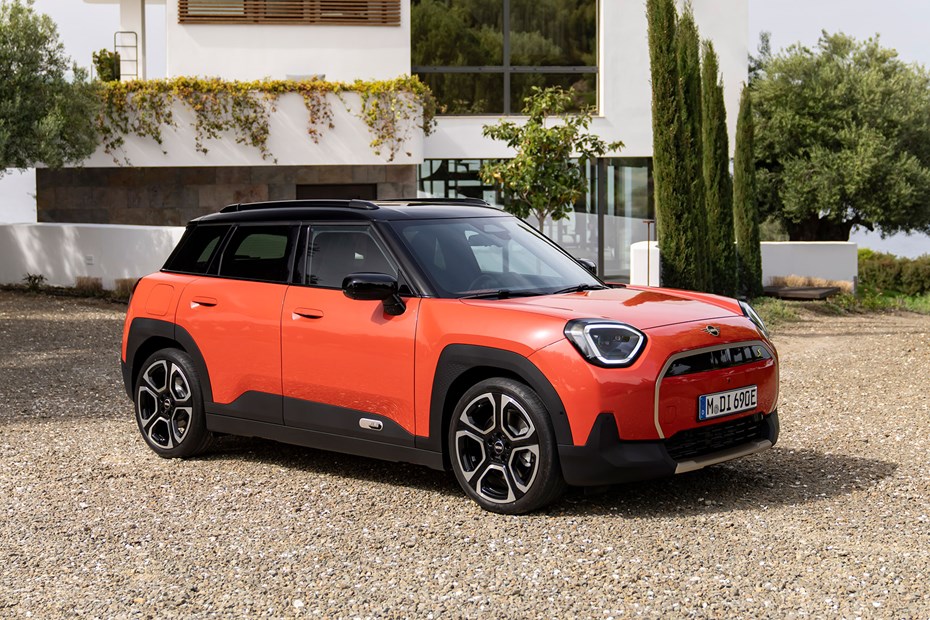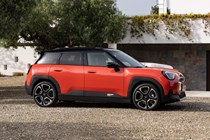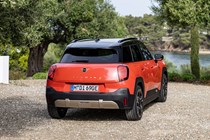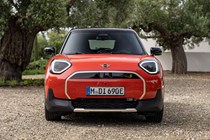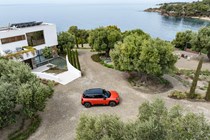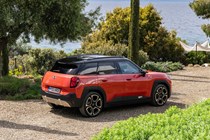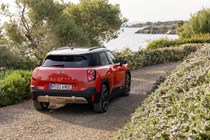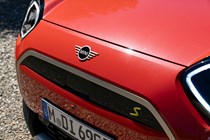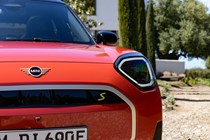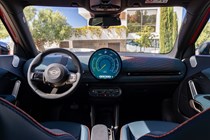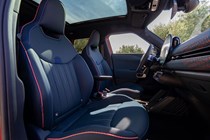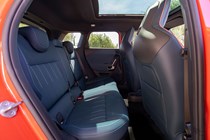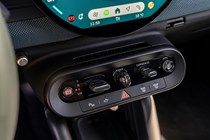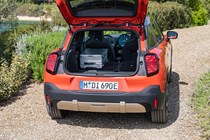This is the all-new, pure-electric MINI Aceman SUV. It’s the latest niche-filling exercise in the brand’s relentless quest to plug the gap between the MINI Hatch and Countryman SUV – and now the latter car has swelled in size for its third generation, it’s hoping the slightly smaller Aceman will better resonate with the public.
In the past, MINI’s efforts to expand its model range past its core cars have ended prematurely. Its previous gap-filling SUV, the two-door Paceman, survived for just three scant years before dwindling sales forced the company to pull it from its showrooms. It was the same story with the equally quirky MINI Roadster.
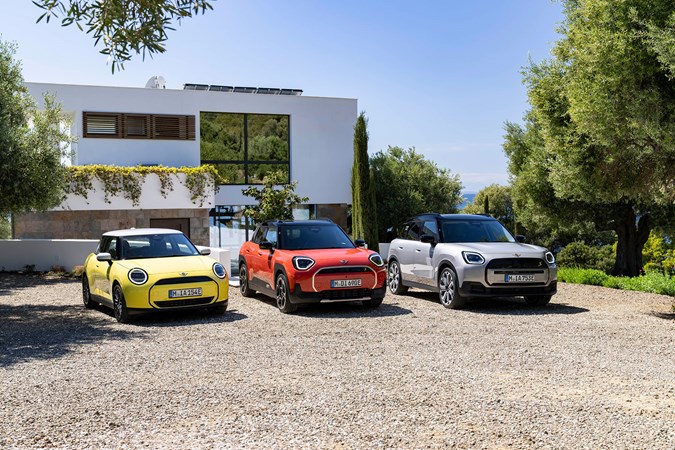
What makes the Aceman different is that it can do things the Hatch and Countryman can’t. It has four doors, so it’s more practical than the former car – but it’s almost 400mm shorter and 300mm narrower than the latter, which means it isn’t so cumbersome to thread around town.
This time, MINI might have cracked the formula. Scroll down to learn everything about the car, including when it’ll be available to buy in the UK and how much it’ll cost.
What’s powering the new MINI Aceman?
You’ll be able to specify it with a choice of two electric powertrains. The entry-level MINI Aceman E features a 42.5kWh battery pack that offers a maximum claimed range of 192 miles. It’s teamed with a 184hp electric motor that can shunt the car from 0–62mph in 7.9 seconds.
Above that, there’s Aceman SE. It has a larger 54.2kWh battery pack that pushes the car’s maximum range up to 252 miles. MINI has also fitted the SE with a punchier 218hp electric motor, which trims the SUV’s 0–62mph time down to 7.1 seconds.
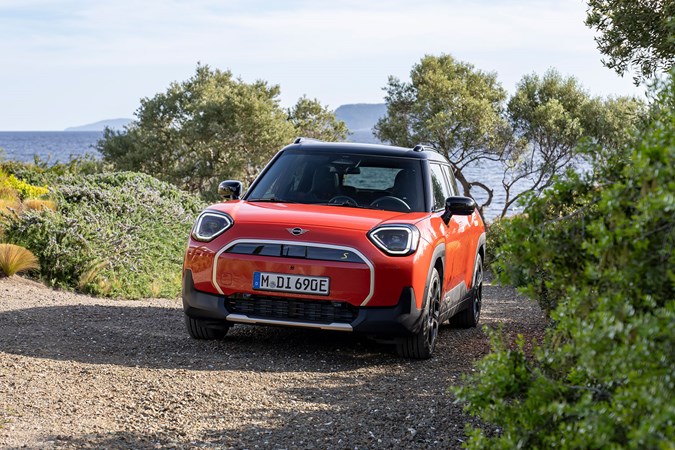
Charge time differ depending on the model. The Aceman E can accept DC speeds of up to 75kW, while the SE can charge at up to 95kW. Under optimal conditions, MINI says the Aceman’s 54.2kWh battery can charge from 10 to 80 percent capacity in less than 30 minutes, which is comparable to the car’s closest rival, the Smart #1.
What’s it like inside?
Unsurprisingly, it’s a lot like the latest MINI Hatch and Countryman. The centre console and steering wheel are identical, the dashboard wears the same funky fabric trim, and you get the same 24cm-diameter circular infotainment system.
That last item is the big-ticket news. MINI is currently the only manufacturer that offers a circular touchscreen in its cars – and, having tried it in the Hatch and Countryman, we can report that it works quite well.
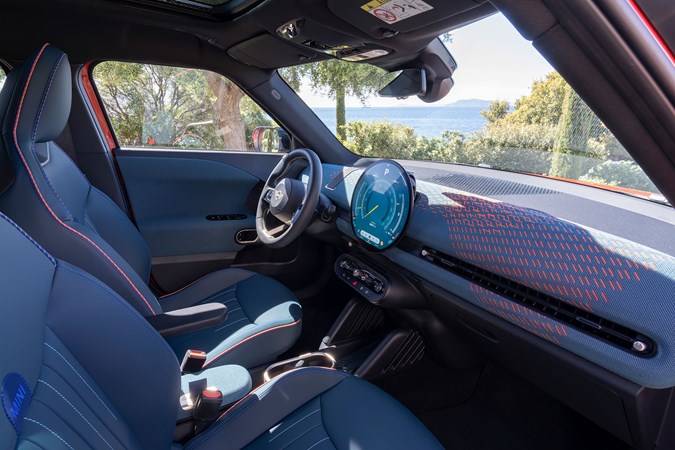
Naturally, most of the interior functions, including the climate controls, have been moved onto the screen, but the menu design is simple enough to not make this too much of a concern. MINI also tries to skirt around the matter with its voice assistant, which can be used to adjust things like navigation instructions and media.
The Aceman’s cabin can also be upgraded with extras such as a wireless smartphone charger (which lives above the cupholders) and a head-up display. We can see that second upgrade being particularly worthwhile because MINI has followed in Tesla’s footsteps and binned off its dedicated gauge cluster. Instead, the car’s speed is displayed on the infotainment screen.
What models and trims are available?
In addition to the pair of powertrains, MINI has given the Aceman the same simple trio of trim choices as the Hatch and Countryman. Buyers can choose from Classic, Exclusive and Sport specifications to personalise their cars. The Classic trim is quite basic, with standard seats and fabric seat upholstery.
Exclusive models gain sports seats, a padded storage box in the centre console and a snazzy pattern on the dashboard and door cards that fades from dark blue to orange from the front to the rear of the cabin.
MINI’s Sport model wears all the trinkets of its John Cooper Works models without any of the extra performance, which is useful if you want the racy looks but need the cheaper car insurance. Inside, this means black and red JCW sports seats and matching upholstery for the dashboard and storage box.
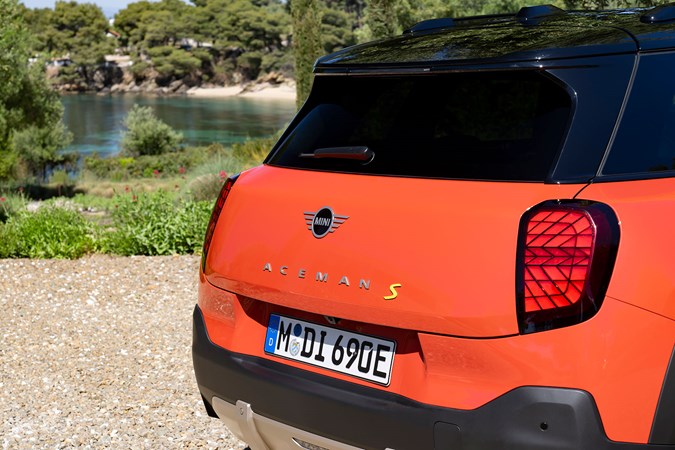
MINI also offers a simple range of option packs. They’re (rather unimaginatively) called Level 1, Level 2 and – you guessed it – Level 3. Each step up the ladder brings a more comprehensive bundle of technology, with Level 1-equipped cars gaining a head-up display, a wireless charger and heated front seats.
Level 2 cars build on this specification with a panoramic sunroof, sun protection glass and a premium Harmon Kardon stereo. MINI’s Level 3 package, meanwhile, adds electrically adjustable front seats, built-in navigation, a data package and a host of additional driver assistance tech, including a more comprehensive lane-keeping assist system and setting that allows you to park the car using your smartphone.
So, what does this mean for me?
Well, if you’re in the market for a reasonably compact SUV, the Aceman could be one to watch. Prices will start from £31,800 for the most basic E model, rising to £36,300 for the top spec SE version with its bigger battery and faster motor. First customer deliveries are also expected to arrive in November 2024.
For all the latest advice, news and finance deals, sign up to the Parkers newsletter here.
Luke Wilkinson is Deputy Editor of Parkers. He has five years of experience as a car journalist, and spends his time writing news, reviews, features and advice pieces for both Parkers and its sister site CAR magazine.



